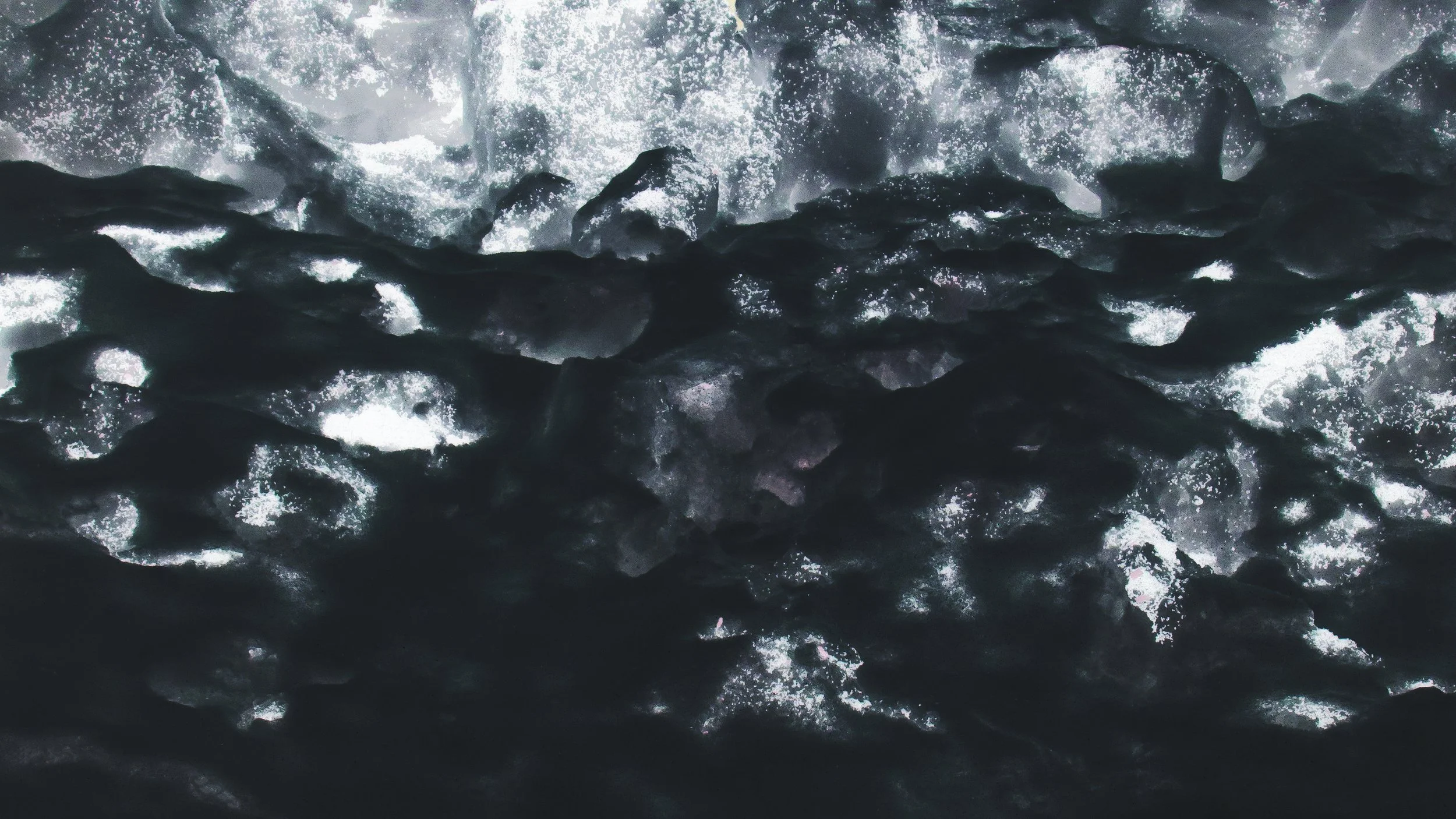PUHE: Climate intervention in the thick present
Kuva: Pietari Purovaara
Strategimme Anni Pokelan puhe Cambridgen St. John’s Collegessa kesällä 2025:
About 4 years ago, I was being escorted to a police van for protesting with Extinction Rebellion Finland. We had closed down a main road in central Helsinki and demanding that the Finnish Government hasten their climate action.
I had previously not been at all into the climate movement or environmentalism. As a teenager I felt like maybe that wasn't trendy enough or punk rock enough – and then came Extinction Rebellion. They spoke about climate impacts in a way that I'd never heard before. They were really concrete about it: they talked about death tolls and diseases and the horrible violence we are facing. And so to this day I think the fear of death is what inspired me into climate action. Pretty self-centered and grim, now that I think about it.
But my point is that I didn't feel climate anxiety. I felt climate grief, and climate rage. I wanted to have a kid in the future, and I was so angry because I felt like that had been taken away from me. It wasn't hope that got me to act. It was despair.
And then something changed. Me and a couple of my Extinction Rebellion friends decided to take a bit of a strategic break and think about what we should try and do next after a big campaign that we did. We founded Operaatio Arktis, because we realised that some devastating climate impacts were already on their way regardless of emission cuts, especially in the arctic area. We started looking into these possible techniques, climate interventions, that could perhaps help us in securing a safe climate and protect specific parts of the climate system.
We dared to look at the state of different glaciers for example, and what was currently actually happening in the atmosphere; what was the average global temperature right now, and what that meant for our earth system elements – at that moment in time. We moved away from this old, more general idea of "Let's just cut emissions and hope for the best" to "Let's cut emissions and triage: look for pragmatic ways in which we could intervene in specific collapses and changes in the climate system."
And this work slowly ended up changing my perspective completely. I noticed that I wasn't desperate anymore.
But here's the thing: I wasn't hopeful either. It was something better.
My favourite feminist theorist Donna Haraway says that, very basically, despair and hope are both rubbish perspectives. And if we look at the myriad of different crises happening right now in the world, it’s clear that both this endless critique, grasping at the past, and self-pitiful nostalgia AND reaching for a utopian future where all suffering has magically ended – these are both completely useless ways of thinking right now!
Instead, Donna Haraway calls us to stay with the trouble, to act in the present reality and engage with it. Not reach for the past, not reach for the future. Not be hopeful, not be desperate. And this is exactly the same lens through which we should look at climate interventions.
If we're not ready to simply accept some of the damage that cannot be avoided by decarbonization alone, we need to urgently research and develop climate intervention technologies. But how to do this the right way? That's the question.
The discourse around geoengineering seems to be very polarised, and especially in the media the perspectives seem to often fall into roughly two categories: either ‘This is a silver bullet that solves everything’ or ‘Geoengineering bad.’
It's pretty widely thought that techno-optimism is a pretty dismal way of trying to solve the climate crisis. Even research suggests it just doesn't work. It makes people complacent and passive and it doesn't really challenge the status quo.
But I think it's just as arrogant to turn away from these technologies altogether, and to believe that we can somehow separate ourselves from them and from our growing need for them. To even think that technology is something "unnatural," as if we're not already deeply entangled with it.
I will hopefully soon have a degree in gender studies, and what I find interesting is that this latter perspective – let's call it techno-pessimism – is something that a lot of my ecofeminist peers are guilty of.
Because much like most feminist academics nowadays, what I'm really interested in is blowing up false binaries. And for me this sort of question of geoengineering (good vs. bad) is just one of them: man/woman, mind/body, nature/technology, pessimism/optimism. I really don't think we need them. What matters usually lies outside of these divides.
I argue that techno-optimism and techno-pessimism, or even just optimism and pessimism, are both, in the end, pacifying and conservative forces – against change.
So what happens when we allow change? When we dare to stay in the troubling present? With our economic, and cultural, and societal crisis and contradictions? If we dared to step outside of our hubris and hopelessness and tried to position ourselves in this reality in a new way?
We might just awaken to the fact that we are intrinsically entangled not just with technology but with these ecosystems on the brink of collapse. With glaciers and with ocean currents. We might just realise that they are preconditions to our lives and the things we love, and that we have a responsibility to be active caretakers for them. That is the basis of being able to repair some of the damage that's been done to the climate system: daring to feel that interconnectedness and that dependence, and also questioning our vitruvian agency. There's an idea: what if we saw these earth system elements not as objects of engineering but as vibrant collaborators in our efforts to uphold the living conditions of this planet?
Today I am 24 years old, and I work in Operaatio Arktis to accelerate responsible climate intervention research. And it's not because I'm arrogant enough to think I know how bad things are going to be or how good things are going to be, but because I want to stay active in this climate reality, not turn away from it.
Since we last evaluated our climate strategies, our reality has changed drastically. And so those strategies and our solutions have to change with it – if we want to respond. Because that's what climate intervention research is about at its best: not just responsibility but ability to respond.
I still want to become a mother. Not as a protest or because I want to make my utopian dreams a reality, but because it is something more than reactive. It's active. I want to be a mother because I have to make this reality here, right now, count.
There's a lot to take in in our present, this reality where we have to, for one, talk about climate interventions in the first place. This is, in many ways, the belly of the beast.
And we need to find our power here, from here.
We need to make the present, with all of its troubles, count. Not turn away but towards: towards the Thwaites glacier, towards the subpolar gyre, and the reality that we share with them. Because that's how we're going to be able to respond: by vigilantly positioning ourselves, again and again, into the thick present.
Kuva: Justus Lehtisaari
AMAP (2017). Lenton, T. M. (2012). "Arctic Climate Tipping Points." Ambio, 41(1), 10-22.
Bodansky, D. (2020). "Arctic Climate Interventions." International Journal of Marine and Coastal Law, 35(3), 596-638.
Haraway, D. J. (2016). Staying with the trouble: Making kin in the Chthulucene. Duke University Press
Rocha, S. R., & García-Díez, F. (2022). "The Techno-Optimists of Climate Change: Science Communication or Technowashing?" Societies, 12(2), 64.
Gardezi, M., & Arbuckle, J. G. (2020). "Techno-Optimism and Farmers' Attitudes Toward Climate Change Adaptation." Environment and Behavior, 52(2), 166-199.
United Nations Development Programme (2023). "Will techno-optimism make us complacent?"


